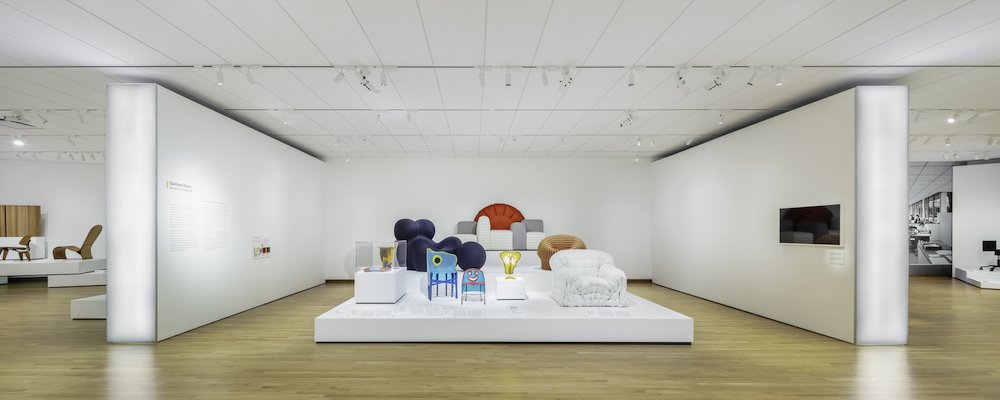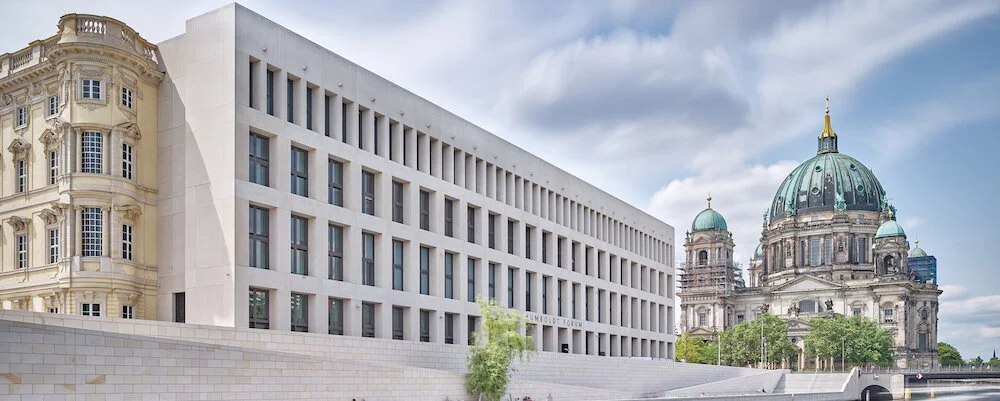Denver Art Museum Design Galleries and Studio by OMA
For its new design galleries, the museum has inaugurated an open, central piazza surrounded by perimeter rooms organised in an alternating sequence of rooms and islands.
Since 1990, the Department of Architecture and Design’s inclusive collections policy has encompassed a broad range of design practices, including architecture, furniture, industrial design, graphic design, and “functional” craft.
Today, the collection consists of more than 18,000 objects dating from the 1500s to the present and comprises one of the preeminent modern and contemporary design collections of any comprehensive museum in the United States.
Approximately 11,000 of those objects comprise the AIGA Design Archives, one of the largest holdings of contemporary American communication design from about 1980 to 2010.
The historical component of the collection consists of a refined body of decorative objects and furniture from the Middle Ages through the mid-1800s. These works present a survey of significant developments in style, material, and technique in European and North American decorative arts.
The greatest strengths of the collection are found in its modern and contemporary design holdings, beginning with objects from the 1800s and early 1900s. These include a selection of innovative American furniture and nearly 250 examples of Ruskin Pottery—tableware, buttons, and small glazed plaques created between 1898 and 1933—which illustrate the English pottery’s short but prolific history.
Objects from the 1930s present the rising importance of industrial design, especially in America. Ceramic labware manufactured by the Coors Porcelain Company in Golden, Colorado is representative of this period. American Modernism is represented by American designers such as Russel Wright and Charles and Ray Eames, as well as European émigrés including Marcel Breuer and Mies van der Rohe. The collection also features examples of Scandinavian Modernist design.
The collection also include objects from the 1940s through the 1970s, in particular, examples of furniture, ceramics, glass, and flatware by Gio Ponti, who with Denver-based James Sudler Associates designed the museum’s Martin Building.
Anti-Modernist design from the 1960s and 1970s is exemplified by works by Italian designers, studio groups, and manufacturers—such as Enzo Mari, Studio Alchimia, and Gufram—as well as Verner Panton and Pierre Paulin. The Postmodernist movement (1980s and early 1990s) is represented by a considerable body of work from Italy, particularly a collection of objects by members of the Memphis Group, founded by Ettore Sottsass.
The museum also owns an extensive collection of graphic design (typography, posters and other combinations of text and image) and local innovative Colorado designers (Phil Risbeck and John Sorbie, Douglas Darden, Rick Griffith).
New Galleries by OMA
As part of an overall campus reunification and building renovation project led by Machado Silvetti and Fentress Architects, the Denver Art Museum has created new design galleries by horizontally bisecting the museum’s original Stanton Gallery on level 1.
OMA has designed two inaugural exhibitions taking place two new galleries and featuring over 400 objects—By Design: Stories and Ideas Behind Objects in the Amanda J. Precourt Design Galleries (Design Gallery), and Gio Ponti: Designer of a Thousand Talents in the Joanne Posner Mayer Gallery (Mezzanine Gallery). A third space, the Ellen Bruss Design Studio (Studio) is a flexible and interactive space for visitors to explore design as a process, engaging directly with objects and materials and creating new works.
The three new rooms amplify Ponti’s intention. The interactive Studio, piazza-like Design Gallery, and topographic Mezzanine Gallery act as distinct yet interconnected zones to stimulate “urban” activity within the museum, like one might experience walking through city blocks. The rooms also integrate subtle references to Ponti—floating abstract planes within the Mezzanine Gallery, compositional techniques reminiscent of Ponti’s furniture design within the Studio, and in the Design Gallery, a curved entry echoes the swooping curves of the Martin Building while its display platforms and walls are rotated to the city grid.
The 720sqm Design Gallery follows a logic of spatial typologies. An open, central “piazza” is surrounded by perimeter rooms organised in an alternating sequence of rooms and islands.
Within the rooms, the viewer is surrounded by the displayed objects. Islands and piers place objects centrally, allowing views from multiple vantage points. A modular and flexible catalogue of platforms facilitates the inherent diversity of types, sizes, and mediums of design objects on display.
The gallery is capable of being efficiently rotated between different exhibitions through reaggregations of platforms, allowing a permanent exhibition space to be transformed at will.
The Design Studio responds to new ways of absorbing information and contextualizes artworks on view through hands-on experiences. A series of hinged walls can be deployed into fluid configurations for a range of programs such as libraries, lounges, workshops, presentations, and other community-oriented activities. Workshop walls employ Ponti’s compositional techniques such as partial planes to organise and spotlight various displays and activities.
Photographs of the OMA galleries by James Florio.































